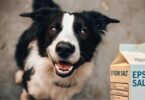Is this fashionable superfood a secret killer or nutritional powerhouse to your furry friend? The popularity of quinoa as a health food has pet owners asking the question, should it be in my dog bowl? This gluten-free seed is packed with essential amino acids, vitamins and minerals and has more to offer than traditional grains such as wheat. However, it is important to know how to prepare it and what portion size to include in the meal plan of your companion before incorporating it.
Being high in protein and fiber, quinoa promotes healthy digestion and muscles. It is perfect as it is free of amino acids, which makes it suitable to pets with food sensitivities or allergies. But saponins, a natural coating on the seeds, may irritate a sensitive stomach unless they are rinsed clean in cooking. Vets will usually advise that you begin with small doses to determine tolerance.
This paper discusses the inclusion of quinoa into the balanced recipes safely and without falling into the common traps. Whether it is the portion guidelines or the preparation methods supported by the experts, you will find out why moderation and the right technique are important. Learn how this nutrient-rich food can be used to supplement kibble or home-cooked meals when used properly.
Introduction: The Rising Popularity of Quinoa in Dog Diets
Quinoa was once a staple of ancient Andean civilizations and has evolved into a global superfood. It is gluten-free and nutrient-dense, which is why it is attractive not only to humans but also to pets. The owners of pets become more interested in finding alternatives to conventional grains such as wheat, which contributes to the introduction of quinoa into the contemporary dog food recipes.
What Is Quinoa and Why It’s Trending
A protein-rich seed of Chenopodium plant, quinoa is rich in all nine essential amino acids. It is a complete protein source, unlike typical grains, which is rare in plant-based foods. This nutritional profile has gained it fame both in gourmet kitchens and veterinary nutrition.
The Growing Interest in Dog Nutrition
Owners are now focusing on new ingredients that are more than just a sustenance. Protein and fiber content are high quality and meet the needs of meals that promote muscle health and digestion. Veterinarians observe that this trend toward functional ingredients reflects the same trend in human diets, which focus more on whole foods than on processed foods.
Can Dogs Eat Quinoa Safely? Guidelines and Considerations
When feeding pets with quinoa, one has to be very careful in order to realize the nutritional benefits of quinoa without exposing them to any dangers. The trick is in the preparation methods and individualized serving portions, which are different according to the size and health requirements of your companion.
Proper Preparation to Remove Saponins
Raw quinoa must always be rinsed in cold water, 1-2 minutes before cooking. This eliminates saponins-natural substances that can cause irritation to a sensitive stomach. Use a fine-mesh strainer to ensure thorough rinsing. Cook in a 2:1 water to seed ratio until fluffy without added salt or spices.
Portion Sizes for Different Dog Breeds
Start with tiny amounts to assess tolerance. In pups weighing less than 10 pounds, add 1 teaspoon to meals. Pets that are medium-sized (25-60 lbs) can have 2-3 teaspoons, whereas large breeds can have up to 1 tablespoon. Large dogs that weigh more than 100 pounds should not be given more than 2 tablespoons at a time.
The high fiber content may cause bloating or diarrhea as a result of overfeeding. Add it slowly in 3-5 days, observing itching or digestive alteration. Talk to your vet to change the amount in case of allergies or illness. Cooked quinoa is best used as a supplement to regular kibble on an occasional basis.
Nutritional Benefits of Adding Quinoa to Your Dog’s Diet
This gluten-free seed has a strong nutritional punch that enhances regular meals. It provides a unique blend of factors essential to energy, growth and long-term wellness, unlike many plant-based sources.
High-Quality Protein and Essential Amino Acids
Quinoa is a complete protein source as it has all nine essential amino acids. These are the building blocks that aid in repairing muscles after a workout and healthy tissue growth. This nutrient boost is especially useful to active pups or aging pets.
Vitamins, Minerals, and Digestive Fiber
This seed is rich in magnesium and iron, which helps the nerves and oxygenation. B vitamins assist in the transformation of food into energy and antioxidants fight inflammation. The insoluble fiber promotes regular digestion, reducing constipation risks.
Quinoa has almost twice as much protein as rice or wheat per serving. It is also more mineral-dense than ordinary grains, which makes bones stronger and coats shinier. When combined with kibble, it provides diversity without overloading sensitive systems.
Quinoa is a nutrient-rich food that balances the needs of the modern diet, especially among pet parents. Never forget about rinsing and moderation to make it as beneficial as possible to the health of your companion.
Comparing Quinoa with Other Grains in Dog Food
The question that many pet parents ask is how quinoa compares to the staples such as rice or wheat in the diet of their companion. The nutritional value of this seed has special benefits on pups that require special diets.
Gluten-Free Advantages for Sensitive Pets
Conventional grains such as wheat and barley have gluten that can cause allergies to certain animals. Quinoa’s gluten-free nature makes it gentler on sensitive stomachs. Animals that have skin problems or stomach problems tend to improve with the change to this alternative.
Quinoa Versus Common Grains: Nutrient Density
Rice is a source of carbohydrates, but quinoa has almost twice as much protein in a serving. It also contains iron, magnesium, and antioxidants that are not common in regular grains. These nutrients support immune function and coat health.
This seed contains a full amino acid profile as opposed to corn or wheat. This aids in preserving lean body mass particularly in active or older pets. Its moderate fiber content supports digestion without causing a spike in blood sugar level.
In the case of overweight friends, quinoa is a low-calorie content, which is a wise choice in weight management programs. Be sure to check with your vet to find the proper balance of your pet.
Tips for Introducing Quinoa to Your Dog’s Meal Plan
Changing your pet to new ingredients is a process that needs patience and planning. Be it as a partial substitute to their kibble or a nutritional supplement, considerate inclusion avoids digestive surprises. Begin by selecting plain, well-rinsed quinoa to reduce the number of possible irritants.
Gradual Introduction and Monitoring Reactions
Start with a teaspoon added to normal diets in small breeds. Bigger pets are able to take a bit more but not more than 10 percent of their daily food intake. First week watch loose stools, gas, or appetite changes.
Keep a journal noting portion sizes and reactions. Skin redness or itching may signal sensitivities. In case of recurring symptoms, stop the new ingredient and ask your veterinarian. Most pets adapt within 2-3 weeks when introduced slowly.
Mixing Quinoa with Regular Dog Kibble
Mix cooked quinoa with something familiar in order to have a balanced nutrition. It is effective to start with a 1:4 ratio (quinoa to kibble). Slowly raise to 1:3 in 14 days without problems.
Batch-cook rinsed quinoa weekly for convenience. Store portions in airtight containers for easy meal prep. Do not add oils, salt, or seasoning- simple preparations agree with canine digestion.
Never forget to give your pet the main food and use this seed as a supplement. Frequent vet visits help to make sure that their diet is changed according to their health requirements.
In a Nutshell: Main Lessons About Feeding Quinoa to Your Furry Friend
When included in the diet of your pet, quinoa can help improve the nutrition of your pet. This is a rare combination of complete proteins, essential amino acids, and digestive fiber found in this gluten-free seed. It can be rinsed well before cooking, to eliminate saponins, making it safe on sensitive stomachs.
Portion control remains critical. Begin with small portions according to the size of your companion and slowly increase in case of no reactions. Quinoa is a better nutrient-dense food than conventional grains, such as wheat, with no gluten-related dangers.
Monitor your pet closely during dietary transitions. Such symptoms as itching or loose stools can be a sign that adjustments are necessary. Always check with a veterinarian to adjust the portions to allergies or health conditions.
Quinoa is a good addition to kibble when it is cooked properly and provides diversity and essential nutrients. It is a wise dietary supplement because of its contribution to muscle health and shiny coats. Educated decisions enable the owners to focus on the well-being of their dog and consider the modern options of nutrition.
FAQ
Is quinoa toxic to pets?
Cooked quinoa is not poisonous, but raw or unwashed forms of quinoa have saponins, which are natural compounds that can cause irritation to the digestive system of a dog. Always rinse thoroughly and cook it before serving.
How much quinoa can I give my small-breed dog?
In the case of smaller breeds, begin with 1-2 teaspoons added to their usual meals. Larger dogs may tolerate up to a tablespoon. Talk to your vet to change the amounts according to weight and activity level.
Does quinoa provide better protein than rice or wheat?
Quinoa is a complete protein source as it has all the nine essential amino acids. It is also gluten free unlike rice or wheat, which is beneficial to pets that are sensitive to grains.
Can quinoa help dogs with allergies?
It is hypoallergenic, which makes it safer to use by pups that are allergic to wheat or corn. But watch out when introducing it to rare reactions such as itching or stomach upset.










Leave a Comment